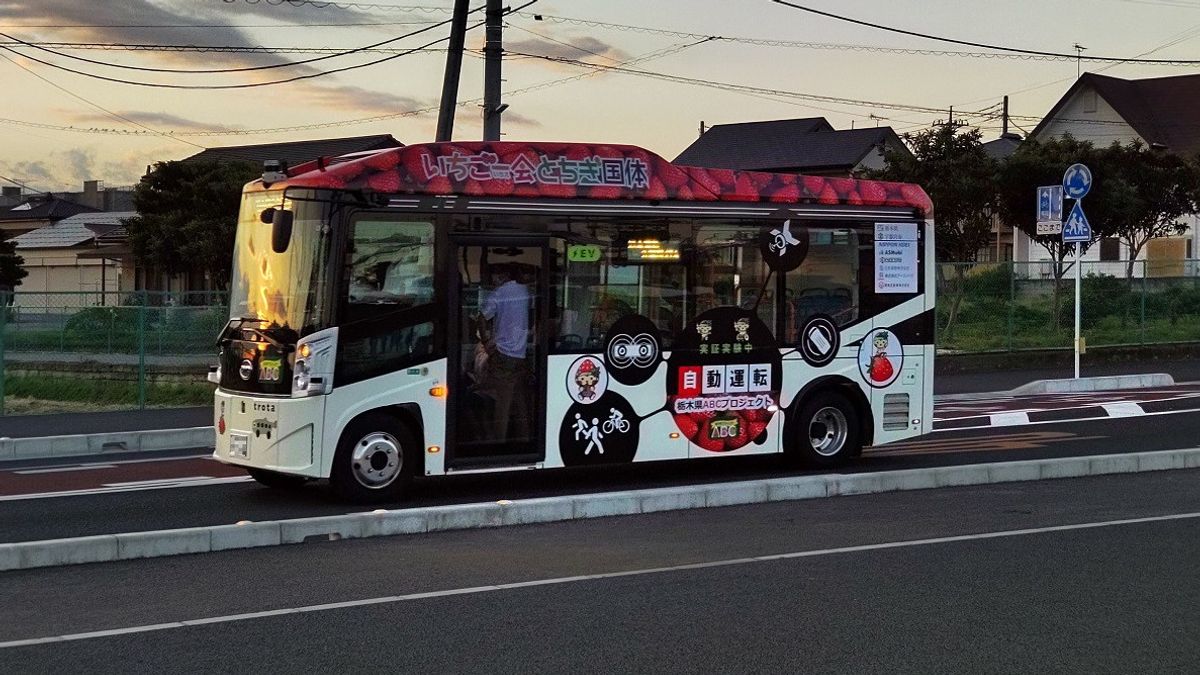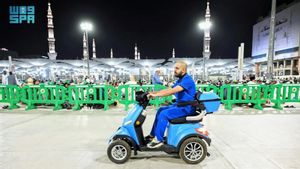JAKARTA - As many as 32 of Japan's 47 prefectures are considering the introduction of Level 4 self-driving buses, vehicles that are fully automated under certain conditions, according to a Kyodo News survey, reflecting rising expectations for the new technology as a way to address the worsening driver shortage.
That number rose to 36 prefectures when asked whether they planned to experiment with or use Level 2 buses, which allow drivers to take their hands off the wheel and get help with braking and acceleration.
Japan revised its road traffic laws last April, paving the way for Level 4 driverless vehicles to operate on public roads. Preparations are underway for the buses to transport people when Osaka hosts the 2025 World Expo.
Of the 32 prefectures that were positive regarding the use of Level 4 buses, Fukui and Fukuoka said a decision had been taken to introduce the buses for public transportation, while 30 prefectures said the plan was "under consideration," The other 15 had no such plans.
For prefectures that plan to introduce it, this program will be limited to several regions within one prefecture, not covering the entire region, quoted from Kyodo News, January 20.
A total of 39 prefectures said they needed Level 4 autonomous buses, citing the need to address labor shortages and make transportation accessible to people in remote mountainous areas, among other reasons.
It is known that the driver shortage is an urgent problem for the transportation sector in Sakura Country, which is likely to be exacerbated by plans to implement restrictions on working hours for drivers starting in April.
According to Teikoku Databank, 98 of 127 private bus operators surveyed in Japan are reducing or eliminating some routes by 2023 due to difficulty finding drivers.
The credit research company points out the possibility that routes in urban areas, where the number of users is relatively high, could also be simplified.
Although expectations for self-driving buses on public roads are quite high, safety concerns still remain. In the survey, many prefectures underscored the need to ensure safety and profitability.
Previously, Level 4 autonomous bus transportation services started in Eiheiji, Fukui Prefecture, last May. However, a minor collision with a bicycle in October caused the service to be discontinued.
During trials in Fukuoka southwest Japan in November, a Level 2 bus had a minor collision with a taxi. No one was hurt.
There are also instances where cameras installed in vehicles identify rain and snow as obstructions, thereby forcing the vehicle to stop.
SEE ALSO:
Public acceptance is another challenge. In an MM Research Institute survey targeting 3,000 people, 40 percent of respondents cited safety concerns as a weakness of driverless vehicles.
Takashi Hikasa, an expert in autonomous driving, said public understanding and cooperation were crucial to introducing driverless buses.
With self-driving vehicles, "we can expect the number of accidents caused by human error to decrease. But there are also concerns that they might make basic mistakes that humans don't make," explained Hikasa, who is a lecturer at Tama University.
The English, Chinese, Japanese, Arabic, and French versions are automatically generated by the AI. So there may still be inaccuracies in translating, please always see Indonesian as our main language. (system supported by DigitalSiber.id)


















